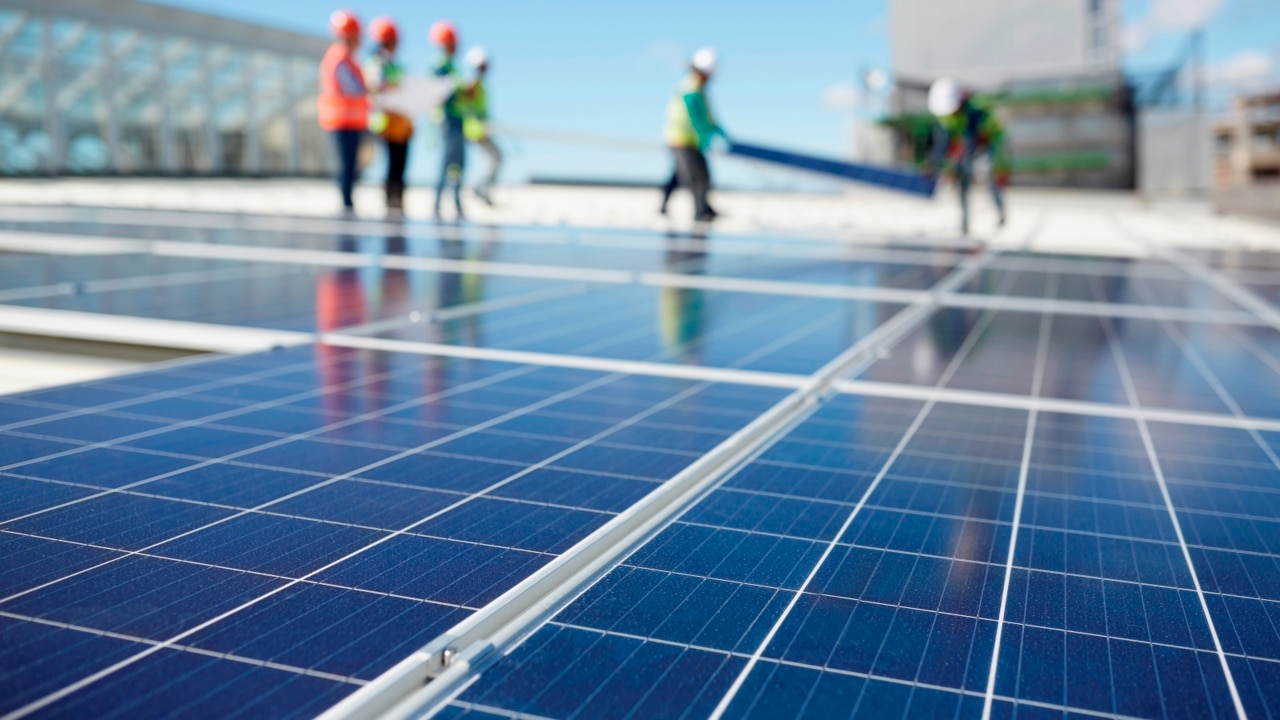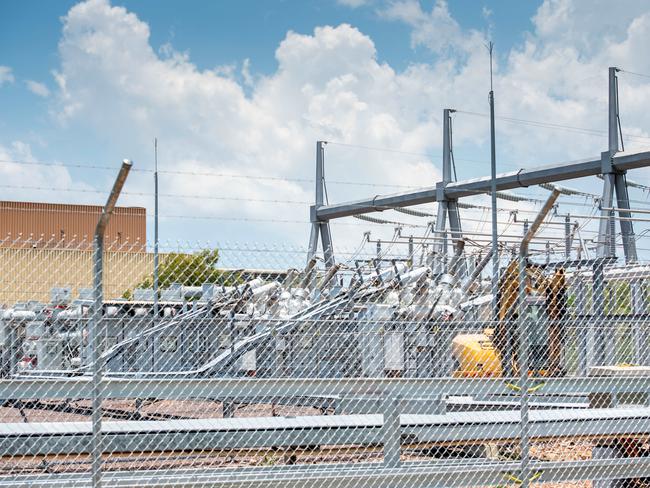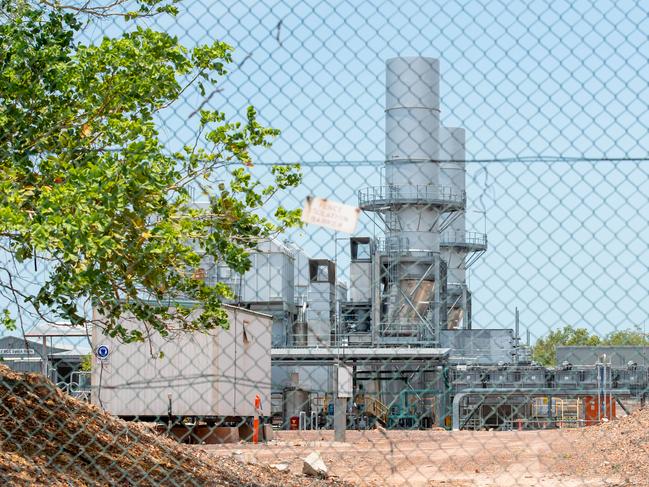The NT government has unveiled its energy emissions road map as it aims towards a greener energy future
The NT government has unveiled its energy sector emissions road map, adding flesh to its plan for a 50 per cent emissions cut by 2030.

Northern Territory
Don't miss out on the headlines from Northern Territory. Followed categories will be added to My News.
The NT government has unveiled its energy sector emissions road map, adding flesh to its plan for a 50 per cent emissions cut by 2030.
Launched at Charles Darwin University by Renewables and Energy Minister Eva Lawler, the plan emphasises solar technology as the Territory’s energy source of choice, buttressed by traditional thermal generation, battery storage, virtual power plans and reduced usage.
The Darwin-Katherine Electricity System Plan is based on today’s technology with expectations of advancement in the medium to long term.
It will be delivered in three stages with the first, the “Ready” phase, spanning 2021-23 and focusing on a new Renewable Energy Hub, the introduction of the first high spec battery to provide system security and connection to large-scale solar projects.

The “Set” phase from 2024-26 will connect solar farms to the Renewable Energy Hub and operate a second high-spec battery.
The final “Go” phase between 2027-2030 will introduce a third security battery, connect more solar to the Hub and large storage batteries and retire thermal machines and focus on hydrogen replacements.
The plan will see thermal electricity, which currently generates 88 per cent of the Top End’s power mix generate only 50 per cent by 2030.
Large-scale solar will increase from 3 per cent to 26 per cent and small solar from 9 per cent to 15 cent of generation.
By 2030, battery storage will contribute to 9 per cent of the mix.
“This plan will provide a clear and comprehensive map for us to get to 50 per cent renewables by 2030,” Ms Lawler said.
“It is about Territorians in that Darwin-Katherine grid, over 150,000 Territorians who access their power through the Darwin Katherine grid, being able to have clean, affordable, reliable electricity.
“This plan provides the direction for PowerWater, for Territory Generation, for Jacana, but also for private providers as well for the direction the Northern Territory government’s going in around renewable energy on the Darwin-Katherine grid.

“We want to make sure power is reliable. We want to make sure Territorians move towards more solar power. One in six Territorians in the Darwin-Katherine grid already have rooftop solar.”
Cheaper power bills?
“It’s a question probably for a government by 2030 because it is one when those savings will be realised,” Ms Lawler said. “One in six Territorians are already accessing cheaper power bills by embracing solar, by putting solar PV on your rooftop you’re able to access really cheap power bills.”
Reliability is also a focus.
“It is about making sure we’ve got clean, reliable, secure power and we need to be able to know that when we turn the lights on, they will go on. We don’t need to have hose system blacks.”
Office of Sustainable Energy executive director Jim McKay said the Territory’s isolation made it self-reliant for energy.
More Coverage
Originally published as The NT government has unveiled its energy emissions road map as it aims towards a greener energy future




